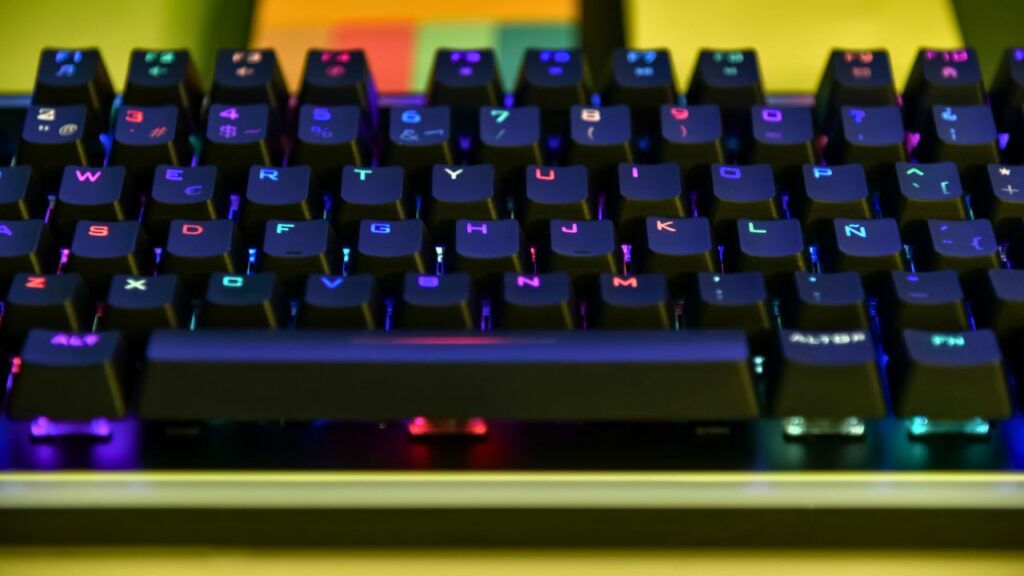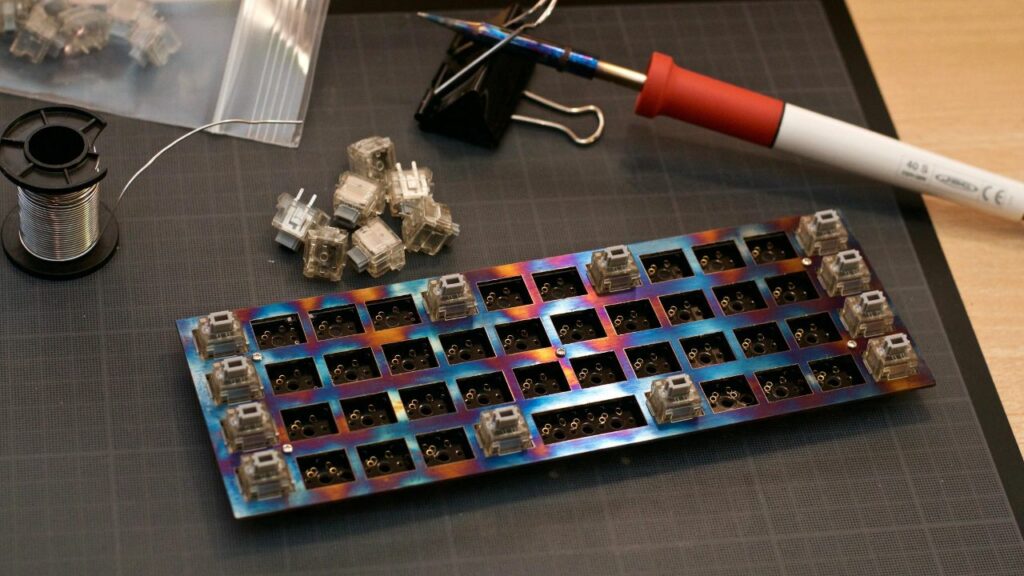![Are Linear Switches Quiet? [The Lowdown on Noise]](https://ongamestart.com/wp-content/uploads/2023/07/red-and-blue-switches-1024x576.jpg)
Few things beat the satisfying “click-clack” that echoes from the keys of a mechanical keyboard. That rhythmic sound, a music to many an enthusiast’s ears, can feel like the heartbeat of productivity. But as with most symphonies, the honeymoon phase may wane, turning those delightful notes into a nagging, relentless chatter. This is where the quiet world of linear switches steps in.
Let’s dive into the niche realm of silent keyboards, where linear switches are not just noiseless workhorses, but sophisticated tools for quiet typing, capable of marrying the thrill of mechanical keyboards with the discretion of a library whisper.
Are Linear Switches Quiet?
When it comes to quietness, certain brands stand out in the choir. Durock, for instance, produces Silent Linears that are renowned for their smoothness and quiet operation. Their Silent Tactile switches, with a reasonably sized bump, offer a smooth and silent typing experience that’s easy on the fingers. For those who crave for a truly serene setup, Matias Quiet Linear switches, designed for court stenographers and others in noise-sensitive environments, promise a virtually noiseless typing experience.
Then, we have the household name of Cherry. The Cherry MX Silent Red and Silent Black are popular options for those embracing the compact charm of the Ducky One 2 Mini. Each of these switches caters to different actuation forces, making them versatile choices for both typing and gaming.
Selecting the Right Keyboard
Several keyboards come with the option to house these whispering linear switches. Take the Durgod K320, for instance, which is well-regarded for its buttery smooth and silent operation. The Ducky MIYA Pro, with its unique designs, can be armed with Cherry MX Silent Red switches for a silent, yet visually delightful typing experience.
For the multi-device users, the Keychron K6 is a viable candidate, offering silent switches, and connectivity across several devices. For the wired and wireless aficionados, the Leopold FC980M, compatible with both Windows and Mac, and hot-swappable, serves as an ideal choice.
The Science of Silence
While the quiet magic of these linear switches is undeniable, it’s important to note that their noise, or lack thereof, is determined by various factors. These include the decibel output, pitch of the sound, the amount of rattling or shaking, the case material, and even the stabilizers.
Yes, linear switches are noiseless, but let’s not forget that keycaps can still clack if they’re bottomed out. Worry not, several sound output reduction options are available, such as adding a dampener inside the keyboard case, lubricating switches, or even adding O-rings.
Linear vs. Tactile – A Matter of Feel
Linear switches are celebrated for their smooth, consistent, bump-free feel throughout each keystroke, making them particularly favored by the gaming community (you might find this interesting). However, it’s important to dispel the myths that often cloud the linear vs. tactile debate.
While many believe tactile switches provide better resistance or lesser travel distance, these are misconceptions. Linear and tactile primarily refer to the actuation types, not the resistance or travel distance. The tactile switches’ bump, which provides tangible feedback, is preferred by typists, but it’s not a universal law.
Advantages of Linear Switches for Typing

Linear switches have etched a place in the hearts of mechanical keyboard enthusiasts for their unique characteristics. While it’s common knowledge that these switches are favorites among the gaming community, they offer a plethora of benefits for typists as well.
One of the standout features of the best linear switches on this list is their smooth and consistent keystrokes. Without a tactile bump or audible click to interrupt, linear switches provide an uninterrupted downward motion that can lead to improved typing speed and accuracy.
Imagine your fingers gliding across the keys as smoothly as a figure skater on ice. There’s no need to overcome a tactile bump, and as a result, typists often report a seamless, fluid typing experience. This consistency of motion can reduce the number of typos and increase your overall typing speed.
Now, let’s talk about comfort. The absence of a tactile bump in linear switches contributes significantly to reducing finger fatigue during long typing sessions. Some users find that the force required to overcome the bump in tactile switches can strain their fingers over time. With linear switches, it’s just a smooth sail from the initial press to the bottom-out, which can be a blessing for marathon typists.
Customization and Personalization – A Linear Love Story

One of the beautiful aspects of mechanical keyboards, and by extension, linear switches, is the potential for customization and personalization. Every keyboard can become an individual’s unique creation, reflecting their personal preferences in both aesthetics and performance.
Linear switches offer a great platform for keyboard modifications. This is where the aftermarket comes to play. There are a host of modifications available, such as switch films, spring swapping, and lubing, each capable of transforming your keyboard into a truly personal piece of technology.
Switch films are used to reduce wobble and enhance the overall stability of your switches, contributing to a more consistent typing experience. Spring swapping allows you to alter the actuation force of your switches. If you find your current switches too light or too heavy, swapping the springs could make them just right.
Lubing, on the other hand, is the secret sauce of the mechanical keyboard world. The application of lubricant can significantly reduce any friction within the switch, leading to an even smoother keystroke. It can also lower the pitch of the bottom-out and top-out sounds, making your linear switches as quiet as a whisper.
While these modifications require some extra effort and time, the end result is worth the investment. By customizing your linear switches, you’re tailoring your keyboard to your own specific needs, preferences, and even quirks. After all, in the wide world of keyboard switches, linear switches stand as a testament to the balance between functionality, personalization, and the pleasure of a silent, smooth typing experience.
Finding Your Silent Companion
In the world of mechanical keyboards, silence is not just golden, it’s achievable, thanks to the gentle whispers of linear switches. From Durock’s silent offerings to Cherry’s noiseless virtuosos, there’s a symphony waiting to be silently played under your fingertips. Whether it’s the Durgod K320’s seamless typing or the Keychron K6’s cross-device capabilities, these keyboards offer quietude without compromising on performance.
When it comes to switches, be it heavy or thocky, the final choice should be a well-researched decision shaped by personal preference. After all, your keyboard should echo your style, not your keystrokes. So, let your fingers dance quietly on the keys, transforming every silent click into a hushed symphony of productivity.